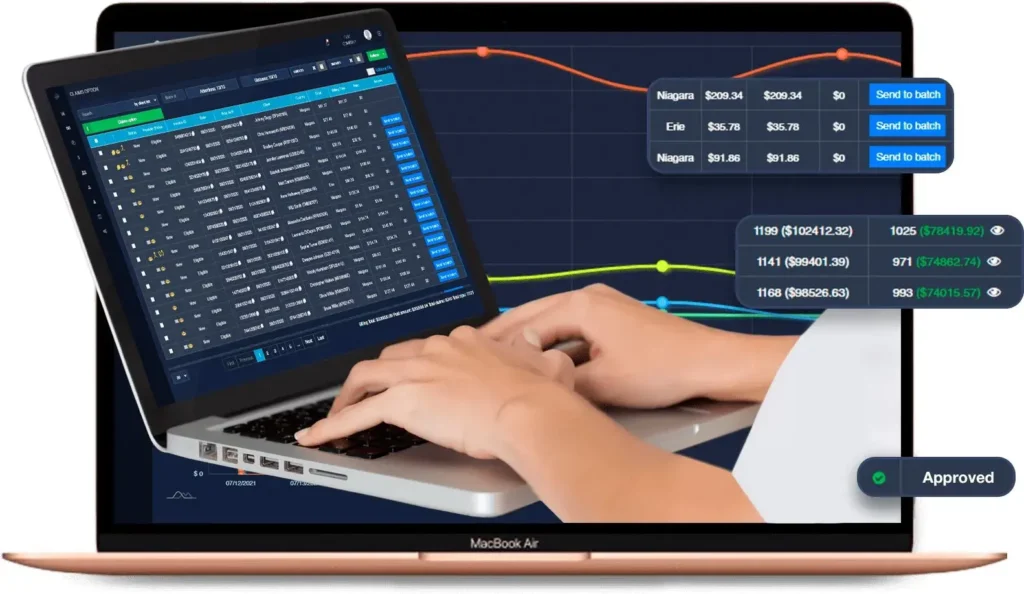Best non-emergency medical transportation (NEMT) software can be a daunting task. With so many options available.
It can be difficult to determine which software will meet your specific needs and provide the best value for your business.
NEMT software and provide recommendations for the best options on the market. Whether you are a small business or a large organization.
Benefits
Implementing NEMT software can bring several benefits to transportation providers. It helps improve efficiency by automating various tasks such as scheduling, dispatching, and invoicing, which reduces the administrative burden on staff.
NEMT software offers real-time tracking and reporting features, allowing you to monitor the status of each trip and make adjustments on the go.
Accurate record-keeping and billing functionalities minimize errors and ensure timely payments. With the ability to generate comprehensive reports, you can make more informed business decisions and identify areas for improvement.
Key features
The software should be intuitive and easy to navigate, ensuring that your staff can quickly adapt to using it without extensive training.
The software should allow you to efficiently assign trips to drivers, taking into account factors such as driver availability, vehicle capacity, and optimized routing.
Real-time tracking and reporting functionalities are also vital. This will enable you to monitor trips in progress, receive notifications of any delays or issues.
Integration with other systems, such as electronic health records or billing platforms, is another feature to consider. This will streamline workflows and reduce manual data entry.
Top Nemt Software
1. XYZ Software:
Known for its user-friendly interface and robust scheduling capabilities, XYZ Software offers a comprehensive solution for NEMT providers. Its intuitive dashboard allows for easy trip assignment and optimized routing.
Real-time tracking and reporting functionalities provide valuable insights for monitoring trips and making data-driven decisions.
2. ABC Software:
With seamless integration capabilities, ABC Software stands out for its ability to streamline workflows by integrating with electronic health records and billing platforms. Its user-friendly interface and powerful reporting capabilities make it a popular choice among transportation companies.
3. PQR Software:
Offering a wide range of features, including real-time tracking, optimized scheduling, and comprehensive reporting, PQR Software is a versatile option for NEMT providers. Its intuitive interface and integration capabilities make it a reliable choice for improving operations.
Real-life success stories
After implementing XYZ Software, they saw a significant improvement in efficiency and productivity.
The user-friendly interface and robust scheduling capabilities allowed them to optimize their routes and assign trips more effectively. Real-time tracking and reporting functionalities .
The seamless integration capabilities allowed them to connect the software with their existing electronic health records and billing platforms.
Eliminating the need for manual data entry and reducing errors. The user-friendly interface and powerful reporting capabilities further enhanced their efficiency, enabling them to provide a seamless transportation experience for their patients.
Suggestions for effectively incorporating NEMT software
1. Needs Assessment:
Before choosing a NEMT software, conduct a thorough assessment of your organization’s specific needs and requirements. Identify the pain points and challenges you currently face, and determine the features and functionalities that are essential for your operations.
2. User Training:
Invest in comprehensive training programs for your staff to ensure they are familiar with the software and its capabilities. Utilize the software to its fullest potential and increase efficiency in their daily tasks.
3. Data Migration:
If you are transitioning from manual processes or an existing system, ensure that your data is properly migrated to the new software. It’s crucial to maintain data integrity and accuracy.
4. User Feedback:
Encourage your staff to provide ongoing feedback on the software’s usability and effectiveness. This feedback can help you identify areas for improvement and make necessary adjustments to optimize the software for your organization’s unique needs.
5. Continuous Monitoring:
Regularly monitor the performance of the software and its impact on your operations. Keep track of key metrics such as trip efficiency, customer satisfaction, and cost savings to assess the software’s effectiveness and make any necessary adjustments.
Conclusion:
It’s important to consider factors such as ease of use, scalability, customization options, integration capabilities, and customer support. Assess the software’s user interface and navigation to ensure that it is intuitive and user-friendly for your staff.
Integration capabilities are also critical. Choose software that seamlessly integrates with your existing systems, such as electronic health record (EHR) platforms or billing software.
This will ensure a smooth flow of data between different systems and eliminate any inefficiencies or duplicated efforts.
This will be invaluable in case of any technical issues or questions that may arise during the implementation or ongoing use of the software.









